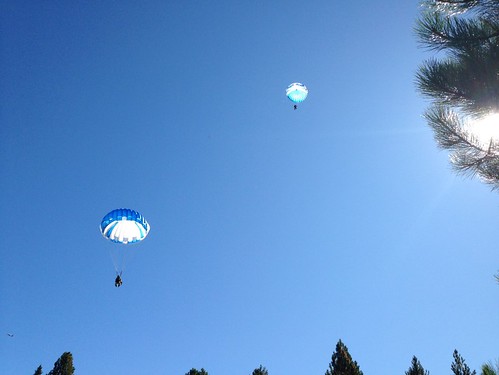
In 1940, Rufus Robinson and Earl Cooley made U.S. Forest Service history parachuting onto a fire over Martin Creek on the Nez Perce National Forest in Idaho. This historic jump started an elite smokejumper program, a program born of necessity and innovation.
Since then, smokejumpers have played a vital role in fire suppression by providing a unique capability to deliver large numbers of highly skilled, qualified firefighters over large distances in a short amount of time.
Now, 75 years later, more than 100 smokejumpers from across the country reunited in Missoula, Montana, in July to share stories and reminisce about their smokejumping days.
“Fire managers are utilizing smokejumpers to either provide direction on the fire until incident management teams arrive, or to remain on the fire until the suppression strategy is completed,” said Tony Johnson, acting National Smokejumper Program Manager.
There are more than 320 smokejumpers stationed at bases across the West, from Yellowstone to California and all the way up the Pacific coast to Washington.
Yes, smokejumpers parachute out of planes into remote areas to provide quick initial attack on forest fires, but they are more than just firefighters in the air. While initial attack still remains a large part of smokejumping some things have changed. For instance, after parachuting into a wildland fire incident, the smokejumpers of today often find themselves assembled into management teams to better assess the situation.
Other changes are in parachute design and the type of aircraft that delivers smokejumpers to a wildland fire. Rapid delivery combined with a wide range of wildland fire qualifications and leadership skills, allows smokejumpers to fill an ever expanding role. The extensive skill set and flexible nature of the smokejumper program allow smokejumpers to fill diverse needs throughout land management agencies.
The smokejumping program will continue to see changes over the years to fulfill its goal to provide the agency with whatever tool best meets the need to effectively fight fires.

